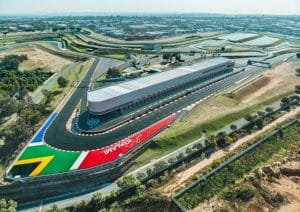Case Study
Kyalami Grand Prix Circuit, South Africa
 Introduction
Introduction
Kyalami Grand Prix Circuit was constructed in 1961. In 1967, the racetrack began hosting the Formula 1 World Championship, becoming a world-renowned racing venue.
Challenge
By early 2010, Kyalami required a substantial track renovation to achieve the high construction standards needed for a safety certification from the Federation International de l’Automobile (FIA), the motorsport’s top governing body.
Resolution
To get Kyalami back on track, Bituguard worked with Kraton to produce a premium modified binder that restores the circuit and adheres to FIA standards. The scope included the track’s refurbishment, realignment and extension. The old asphalt track was excavated down to the base layer. This asphalt was treated so it could serve as the foundation for the new modified binder and surface layers.
To meet specifications by the Committee of Land Transport Officials (COLTO), the asphalt mix needed to be impermeable, have a high deformation and fatigue resistance, and avoid creep from abnormal surface forces. This was accomplished by designing a new medium graded asphalt mix with a five percent styrene-butadiene-styrene (SBS) modified binder.
The race circuit was successfully executed, and the materials’ consistency made it possible to produce an asphalt mix to international standards for high-speed safety. The renovated 4.5 km Kyalami Grand Prix Circuit is certified by the FIA as a Grade 2 race track that meets stringent international safety and quality standards, becoming the only current motor racing facility in Africa to achieve this accreditation.
Adding SBS to the modified asphalt enhanced the track’s durability. Since its reopening, the race track has proven its quality and performance with drivers racing at speeds approaching 320 km per hour.
